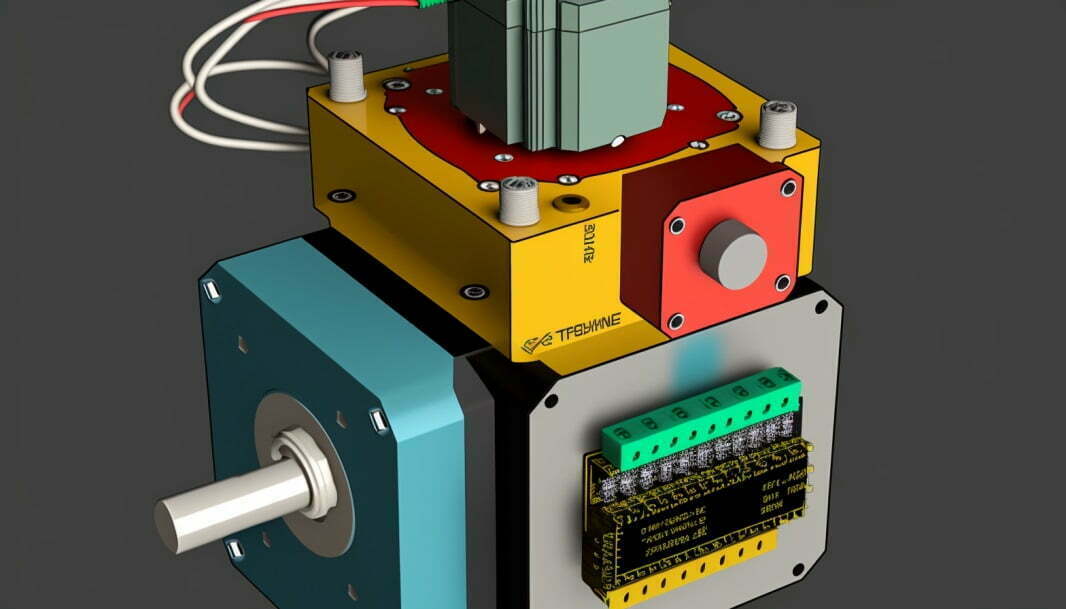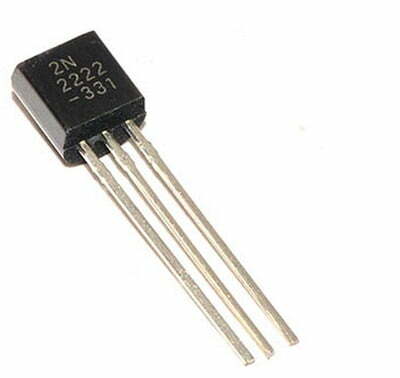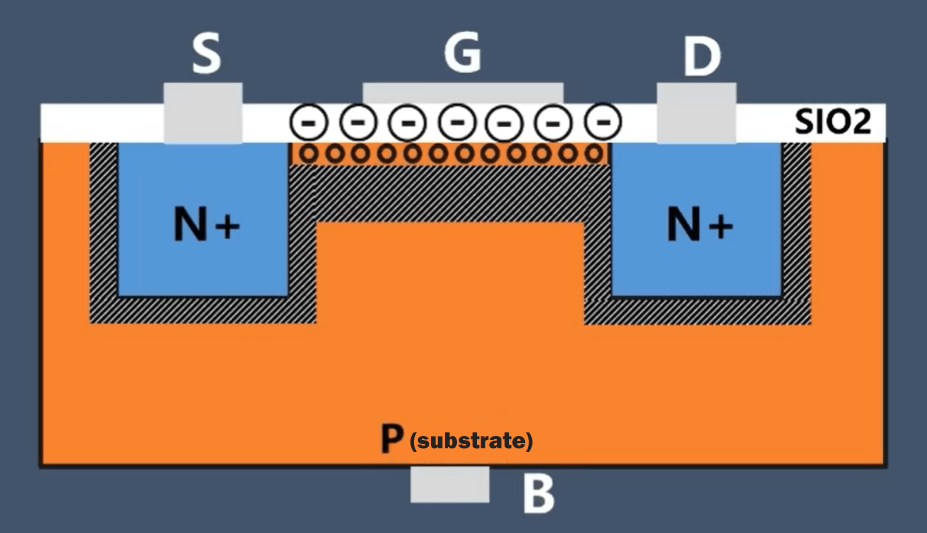If you are in the field of robotics or CNC machines, then you must have come across stepper motors. These motors are widely used for their precision and accuracy, but there is one technology that is revolutionizing the way stepper motors work – Accelstepper. This technology is changing the way stepper motors function, providing faster and more precise movement in a variety of settings. In this article, we will explore the working of Accelstepper and its impact on stepper motor function.
Understanding the Traditional Functioning of Stepper Motors
To understand the importance of Accelstepper, it is essential to first understand how stepper motors work. Stepper motors are widely used for their ability to move in accurate and precise steps. They work on the principle of electromagnetism, which means that they use magnetic fields to generate torque and rotation. Stepper motors use a series of coils that are energized in a specific sequence to rotate the motor shaft.
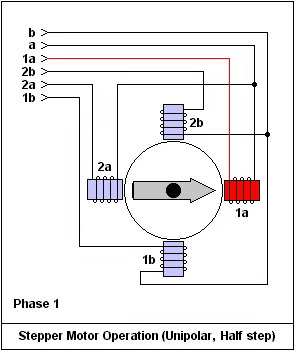
The traditional method of controlling stepper motors is through a process called pulse and direction control. In this method, the stepper motor receives a series of electrical pulses, and the direction of rotation is controlled by the direction signal. However, this method has some limitations. One of the biggest drawbacks of pulse and direction control is that it provides a jerky movement, which can cause vibration and noise.
What is Accelstepper and How Does it Work?
Accelstepper is a new technology that provides an alternative method of controlling stepper motors. It is a library for Arduino that provides a faster and smoother way of controlling stepper motors. The Accelstepper library allows you to control the acceleration and deceleration of stepper motors, providing a smoother and more precise movement.
Accelstepper works by using a process called microstepping. In microstepping, the stepper motor is divided into smaller steps, which provides a smoother and more precise movement. Accelstepper provides up to 256 microsteps per step, which provides a very smooth movement.
Another important feature of Accelstepper is that it allows you to control the speed and acceleration of the stepper motor. This means that you can achieve faster and smoother acceleration and deceleration, which reduces vibration and noise.
Here is an example code that demonstrates how AccelStepper can change the stepper motor function by smoothly accelerating and decelerating the motor:
#include <AccelStepper.h>
// Define the stepper motor connections
#define motorPin1 8
#define motorPin2 9
#define motorPin3 10
#define motorPin4 11
// Create a new instance of AccelStepper
AccelStepper stepper(AccelStepper::FULL4WIRE, motorPin1, motorPin2, motorPin3, motorPin4);
void setup() {
// Set the maximum speed and acceleration of the motor
stepper.setMaxSpeed(200);
stepper.setAcceleration(100);
// Move the motor to its initial position
stepper.moveTo(0);
}
void loop() {
// Check if the motor has reached its target position
if (stepper.distanceToGo() == 0) {
// If the motor has reached its target position, choose a new random target
int newPosition = random(-1000, 1000);
stepper.moveTo(newPosition);
}
// Step the motor
stepper.run();
}
In this example, we create a new instance of AccelStepper and set the maximum speed and acceleration of the motor. We then move the motor to its initial position using the moveTo() function.
In the loop() function, we check if the motor has reached its target position using the distanceToGo() function. If the motor has reached its target position, we choose a new random target position using the random() function and move the motor to that position using moveTo().
We then call the run() function to step the motor. AccelStepper will automatically accelerate and decelerate the motor smoothly.
Benefits of Using Accelstepper in Stepper Motors
The benefits of using Accelstepper in stepper motors are numerous. Some of the most prominent benefits are:
Faster and More Precise Movement
One of the most significant benefits of using Accelstepper in stepper motors is that it provides faster and more precise movement. The micro stepping feature of Accelstepper provides a smoother movement, which reduces vibration and noise.
Reduced Vibration and Noise
The traditional method of controlling stepper motors can cause vibration and noise, which can be a significant problem, especially in sensitive applications such as robotics. However, Accelstepper provides a smoother movement, which reduces vibration and noise.
Improved Power Consumption
Accelstepper provides a more efficient way of controlling stepper motors, which can help reduce power consumption. This is particularly important in applications such as robotics, where battery life is a significant concern.
Applications of Accelstepper
Accelstepper has applications in a wide range of industries, including robotics, CNC machines, 3D printing, and more. In robotics, Accelstepper can be used to control the movement of robotic arms and legs. In CNC machines, Accelstepper can be used to control the movement of the machine head. In 3D printing, Accelstepper can be used to control the movement of the print head.
How to Implement Accelstepper in Your Stepper Motor System
Implementing Accelstepper in your stepper motor system is relatively straightforward. Here’s an example for controlling the rotating direction of a stepper motor using the AccelStepper library in Arduino:
Step 1: Set up the Circuit
First, you’ll need to wire your stepper motor to your Arduino. You’ll typically need four wires to control a bipolar stepper motor. Here’s an example of how to wire a bipolar stepper motor to an Arduino:
Connect one coil to pins 2 and 4 on the Arduino
Connect the other coil to pins 3 and 5 on the Arduino
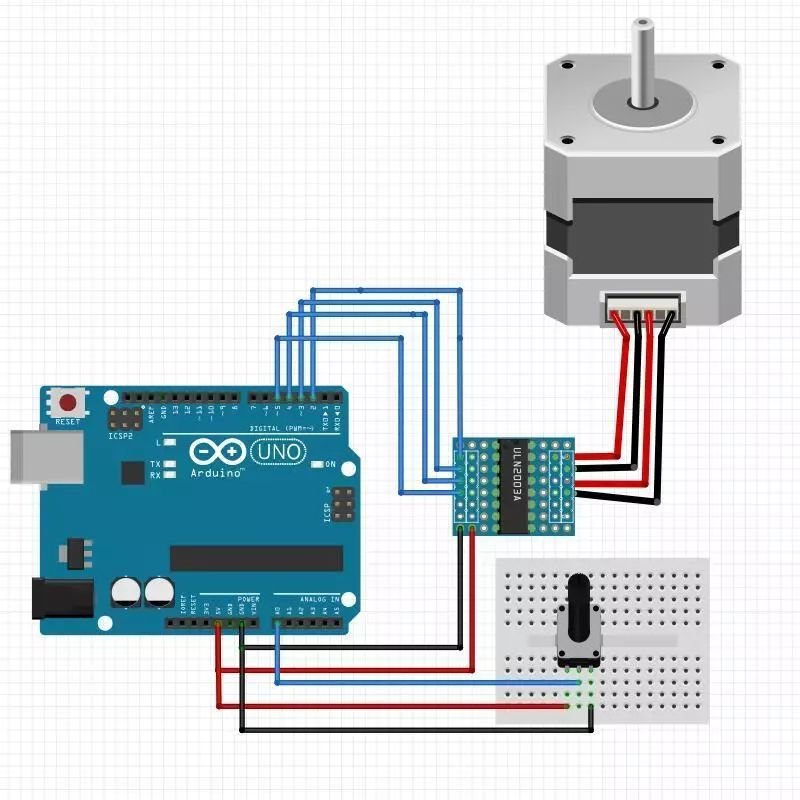
Step 2: Install the AccelStepper Library
You’ll need to download and install the AccelStepper library to control your stepper motor. You can do this through the Arduino IDE by going to “Sketch > Include Library > Manage Libraries” and searching for “AccelStepper”.

Step 3: Set up the AccelStepper Library
Once you’ve installed the AccelStepper library, you’ll need to include it in your sketch and create an AccelStepper object. Here’s an example:
#include <AccelStepper.h>
// Set up the stepper motor object
AccelStepper stepper(AccelStepper::DRIVER, 2, 3);
In this example, we're using the DRIVER mode of the AccelStepper library, which is suitable for controlling a bipolar stepper motor. We're also specifying the pins that the stepper motor is connected to (2 and 3).
Step 4: Set the Speed and Direction of the Stepper Motor
To control the rotating direction of the stepper motor, you can use the setSpeed() and setDirection() functions. Here’s an example:
// Set the speed of the stepper motor
stepper.setSpeed(500);
// Set the direction of the stepper motor
stepper.setDirection(1); // 1 for clockwise, -1 for counterclockwise
In this example, we’re setting the speed of the stepper motor to 500 steps per second using setSpeed(). We’re also setting the direction of the stepper motor to clockwise using setDirection().
Step 5: Control the Stepper Motor
Finally, you can control your stepper motor using the complete code:
#include <AccelStepper.h>
// Define stepper motor connections and steps per revolution
#define motorPin1 2
#define motorPin2 3
#define motorPin3 4
#define motorPin4 5
#define stepsPerRevolution 200
// Create a new AccelStepper object
AccelStepper stepper(AccelStepper::FULL4WIRE, motorPin1, motorPin2, motorPin3, motorPin4);
void setup() {
// Set maximum speed and acceleration
stepper.setMaxSpeed(1000);
stepper.setAcceleration(500);
}
void loop() {
// Rotate clockwise for 1 revolution
stepper.move(stepsPerRevolution);
stepper.runToPosition();
// Pause for 1 second
delay(1000);
// Rotate counterclockwise for 1 revolution
stepper.move(-stepsPerRevolution);
stepper.runToPosition();
// Pause for 1 second
delay(1000);
}
Tips for Optimizing the Performance of Your Stepper Motor with Accelstepper
To optimize the performance of your stepper motor with Accelstepper, there are a few tips that you should keep in mind. First, it is essential to properly calibrate your stepper motor. This means that you should set the correct number of steps per revolution and the speed of the motor. You should also set the acceleration and deceleration parameters to achieve the smoothest movement.
Another important tip is to use high-quality stepper motors. High-quality stepper motors are essential for achieving the best performance with Accelstepper.
Comparison of Accelstepper with Other Stepper Motor Control Methods
Accelstepper is not the only technology that can be used to control stepper motors. There are other methods such as pulse and direction control and stepper motor drivers. However, Accelstepper provides some significant advantages over these methods.
Compared to pulse and direction control, Accelstepper provides a smoother and more precise movement. It also reduces vibration and noise, which can be a significant issue with pulse and direction control.
Compared to stepper motor drivers, Accelstepper provides a more efficient way of controlling stepper motors. It also provides smoother movement, which can be important in applications such as robotics.
Future Advancements in Accelstepper Technology
Accelstepper is a relatively new technology, and there is still a lot of research being done to improve its performance. One area of research is in improving the efficiency of Accelstepper. Researchers are working on developing new algorithms that can further reduce power consumption.
Another area of research is in improving the accuracy of Accelstepper. Researchers are developing new methods of micro stepping that can provide even more precise movement.
Conclusion
Accelstepper is a game-changer for stepper motor function. It provides faster and more precise movement, reduces vibration and noise, and improves power consumption. It has applications in a wide range of industries, including robotics, CNC machines, 3D printing, and more. If you are looking for a way to optimize the performance of your stepper motor, then Accelstepper is definitely worth considering.

